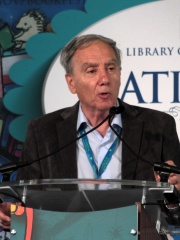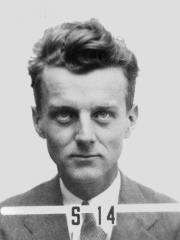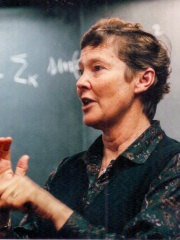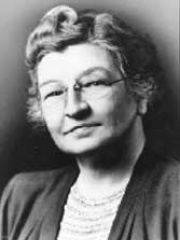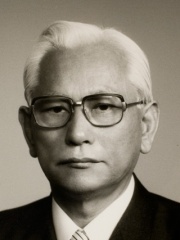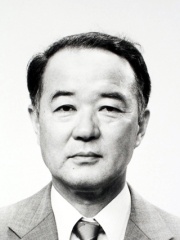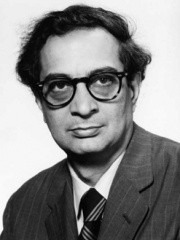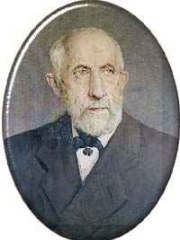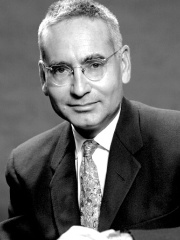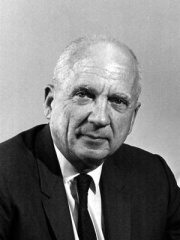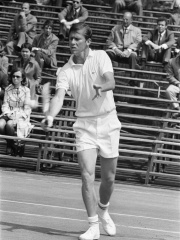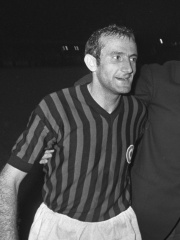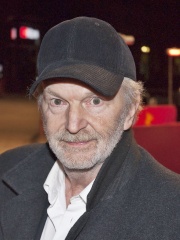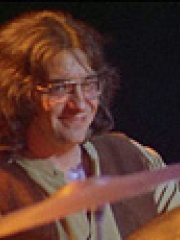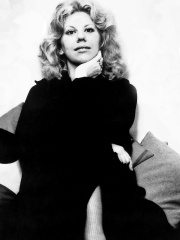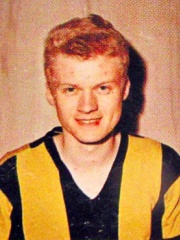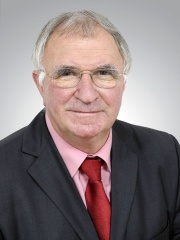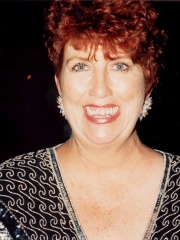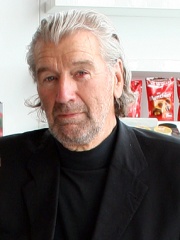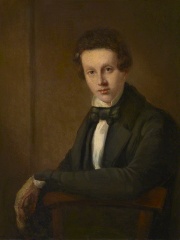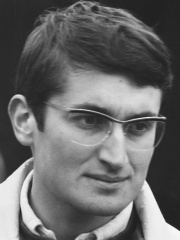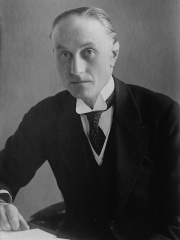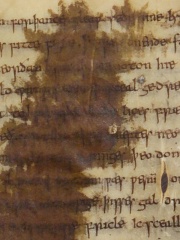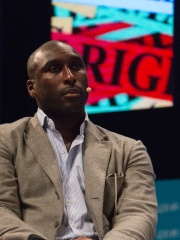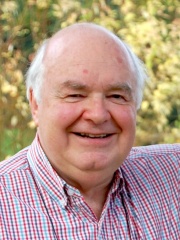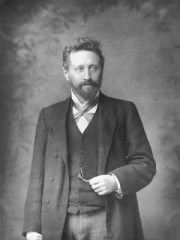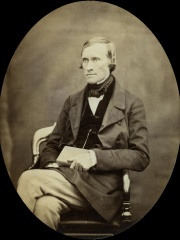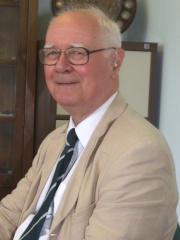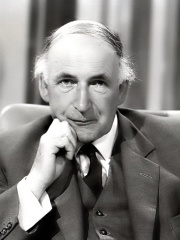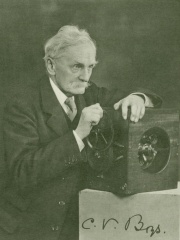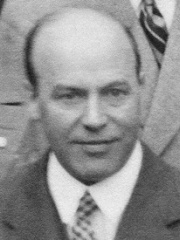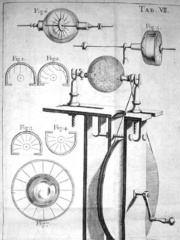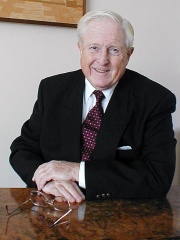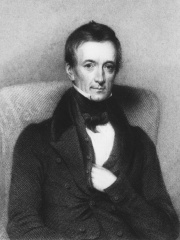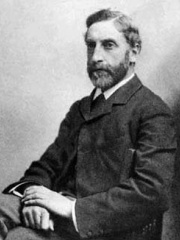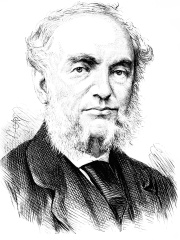PHYSICIST
Brandon Carter
1942 - Today
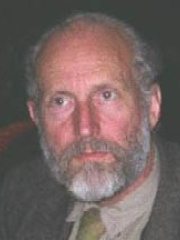
 Brandon Carter
Brandon Carter
Brandon Carter, (born 1942) is an Australian theoretical physicist who explores the properties of black holes, and was the first to name and employ the anthropic principle in its contemporary form. Read more on Wikipedia
His biography is available in 17 different languages on Wikipedia. Brandon Carter is the 669th most popular physicist (up from 717th in 2024), the 3,900th most popular biography from United Kingdom (up from 4,200th in 2019) and the 76th most popular British Physicist.
Memorability Metrics
Page views of Brandon Carter by language
Among PHYSICISTS
Among physicists, Brandon Carter ranks 669 out of 851. Before him are Mario Livio, Seth Neddermeyer, Helen Quinn, Alexander Markovich Polyakov, Edith Clarke, and Yoshiaki Arata. After him are Kazuhiko Nishijima, Stanley Mandelstam, Ali Javan, Orest Khvolson, Alvin M. Weinberg, and Norris Bradbury.
Most Popular Physicists in Wikipedia
Go to all RankingsMario Livio
1945 - Present
HPI: 55.98
Rank: 663
Seth Neddermeyer
1907 - 1988
HPI: 55.95
Rank: 664
Helen Quinn
1943 - Present
HPI: 55.94
Rank: 665
Alexander Markovich Polyakov
1945 - Present
HPI: 55.91
Rank: 666
Edith Clarke
1883 - 1959
HPI: 55.90
Rank: 667
Yoshiaki Arata
1924 - 2018
HPI: 55.87
Rank: 668
Brandon Carter
1942 - Present
HPI: 55.83
Rank: 669
Kazuhiko Nishijima
1926 - 2009
HPI: 55.76
Rank: 670
Stanley Mandelstam
1928 - 2016
HPI: 55.75
Rank: 671
Ali Javan
1926 - 2016
HPI: 55.74
Rank: 672
Orest Khvolson
1852 - 1934
HPI: 55.74
Rank: 673
Alvin M. Weinberg
1915 - 2006
HPI: 55.64
Rank: 674
Norris Bradbury
1909 - 1997
HPI: 55.63
Rank: 675
Contemporaries
Among people born in 1942, Brandon Carter ranks 470. Before him are Lutz D. Schmadel, Dennis Ralston, Giovanni Lodetti, Michael Gwisdek, Jim Keltner, and Enrique Morente. After him are Erica Jong, Tom Turesson, João Lourenço, Antoni Piechniczek, Bernard Darniche, and Marcia Wallace.
Others Born in 1942
Go to all RankingsLutz D. Schmadel
ASTRONOMER
1942 - 2016
HPI: 55.94
Rank: 464
Dennis Ralston
TENNIS PLAYER
1942 - 2020
HPI: 55.92
Rank: 465
Giovanni Lodetti
SOCCER PLAYER
1942 - 2023
HPI: 55.89
Rank: 466
Michael Gwisdek
ACTOR
1942 - 2020
HPI: 55.88
Rank: 467
Jim Keltner
MUSICIAN
1942 - Present
HPI: 55.86
Rank: 468
Enrique Morente
SINGER
1942 - 2010
HPI: 55.83
Rank: 469
Brandon Carter
PHYSICIST
1942 - Present
HPI: 55.83
Rank: 470
Erica Jong
WRITER
1942 - Present
HPI: 55.83
Rank: 471
Tom Turesson
SOCCER PLAYER
1942 - 2004
HPI: 55.80
Rank: 472
João Lourenço
SOCCER PLAYER
1942 - Present
HPI: 55.79
Rank: 473
Antoni Piechniczek
SOCCER PLAYER
1942 - Present
HPI: 55.77
Rank: 474
Bernard Darniche
RACING DRIVER
1942 - Present
HPI: 55.76
Rank: 475
Marcia Wallace
ACTOR
1942 - 2013
HPI: 55.76
Rank: 476
In United Kingdom
Among people born in United Kingdom, Brandon Carter ranks 3,901 out of 8,785. Before him are Clive Russell (1945), Frederick Sandys (1829), Al Pease (1921), Thomas Weelkes (1576), John Miles (1943), and Samuel Hoare, 1st Viscount Templewood (1880). After him are Cynewulf (900), Sol Campbell (1974), John Lennox (1943), Edward Pellew, 1st Viscount Exmouth (1757), Declan Rice (1999), and Walter Burley (1275).
Others born in United Kingdom
Go to all RankingsClive Russell
ACTOR
1945 - Present
HPI: 55.85
Rank: 3,895
Frederick Sandys
PAINTER
1829 - 1904
HPI: 55.85
Rank: 3,896
Al Pease
RACING DRIVER
1921 - 2014
HPI: 55.84
Rank: 3,897
Thomas Weelkes
COMPOSER
1576 - 1623
HPI: 55.84
Rank: 3,898
John Miles
RACING DRIVER
1943 - 2018
HPI: 55.84
Rank: 3,899
Samuel Hoare, 1st Viscount Templewood
POLITICIAN
1880 - 1959
HPI: 55.84
Rank: 3,900
Brandon Carter
PHYSICIST
1942 - Present
HPI: 55.83
Rank: 3,901
Cynewulf
WRITER
900 - 900
HPI: 55.83
Rank: 3,902
Sol Campbell
SOCCER PLAYER
1974 - Present
HPI: 55.83
Rank: 3,903
John Lennox
MATHEMATICIAN
1943 - Present
HPI: 55.82
Rank: 3,904
Edward Pellew, 1st Viscount Exmouth
MILITARY PERSONNEL
1757 - 1833
HPI: 55.82
Rank: 3,905
Declan Rice
SOCCER PLAYER
1999 - Present
HPI: 55.81
Rank: 3,906
Walter Burley
PHILOSOPHER
1275 - 1344
HPI: 55.81
Rank: 3,907
Among PHYSICISTS In United Kingdom
Among physicists born in United Kingdom, Brandon Carter ranks 76. Before him are William Edward Ayrton (1847), James David Forbes (1809), John Polkinghorne (1930), Bernard Lovell (1913), C. V. Boys (1855), and Michael Green (1946). After him are Edward Andrade (1887), Francis Hauksbee (1660), Raymond Gosling (1926), Peter Mark Roget (1779), John Hopkinson (1849), and Balfour Stewart (1828).
William Edward Ayrton
1847 - 1908
HPI: 57.46
Rank: 70
James David Forbes
1809 - 1868
HPI: 57.30
Rank: 71
John Polkinghorne
1930 - 2021
HPI: 56.29
Rank: 72
Bernard Lovell
1913 - 2012
HPI: 56.19
Rank: 73
C. V. Boys
1855 - 1944
HPI: 56.08
Rank: 74
Michael Green
1946 - Present
HPI: 56.05
Rank: 75
Brandon Carter
1942 - Present
HPI: 55.83
Rank: 76
Edward Andrade
1887 - 1971
HPI: 55.60
Rank: 77
Francis Hauksbee
1660 - 1713
HPI: 55.60
Rank: 78
Raymond Gosling
1926 - 2015
HPI: 54.26
Rank: 79
Peter Mark Roget
1779 - 1869
HPI: 53.79
Rank: 80
John Hopkinson
1849 - 1898
HPI: 53.31
Rank: 81
Balfour Stewart
1828 - 1887
HPI: 53.20
Rank: 82
